Butterflies and Moths
Media
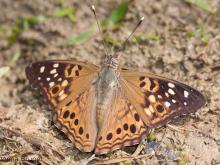
Species Types
Scientific Name
Asterocampa celtis
Description
The hackberry emperor eats hackberry leaves as a caterpillar. The adults fly erratically. They often alight on people to absorb sodium from sweat.
Media
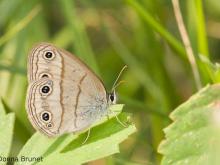
Species Types
Scientific Name
Megisto cymela
Description
The little wood satyr is an abundant butterfly found in Missouri’s open woodlands and brushy fields. Its bouncing flight has been called “skipping.”
Media
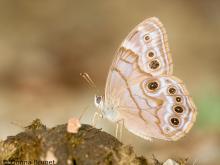
Species Types
Scientific Name
Enodia anthedon (syn. Lethe anthedon)
Description
The northern pearly-eye is grayish brown with dark eyespots. Of three pearly-eye species in Missouri, it is the most widespread.
Media
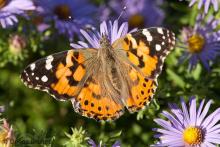
Species Types
Scientific Name
Vanessa cardui
Description
The painted lady is a delicately patterned butterfly found nearly worldwide. It migrates to Missouri in spring. There are several broods.
Media

Species Types
Scientific Name
Polygonia interrogationis
Description
The question mark is named for the shape of the small silver mark on the lower side of the hindwings. It flies in Missouri April to November.
Media

Species Types
Scientific Name
Anaea andria
Description
As it rests with wings closed, the goatweed leafwing mimics a dry, dead leaf. But when it flutters around, it flashes bright rusty orange on the top side of its wings.
Media

Species Types
Scientific Name
Speyeria idalia
Description
The regal fritillary is a large, silver-spotted, orange and blackish-gray butterfly of our native tallgrass prairies. Because of its dwindling habitat and steeply declining numbers, it is a species of conservation concern in Missouri and nationally.
Media
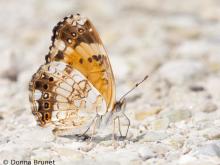
Species Types
Scientific Name
Chlosyne nycteis
Description
Black and orange above, paler below, the silvery checkerspot has a telltale wide white crescent in a brownish patch along the edge of the hindwing underside.
Media
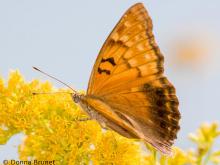
Species Types
Scientific Name
Asterocampa clyton
Description
The tawny emperor is less common than the hackberry emperor and has a rustier coloration. Both species feed on hackberry trees as caterpillars.
Media

Species Types
Scientific Name
Pontia protodice
Description
The checkered white is named for the charcoal-colored patterns on the white wings of adults. As with the closely related cabbage white, the larvae feed on plants in the mustard family.
See Also


Media

Species Types
Scientific Name
About 1,500 species in North America north of Mexico
Description
Adult caddisflies are mothlike. Their larvae are aquatic and build portable, protective cases out of local materials, including grains of sand, bits of leaves and twigs, and other debris.
Media

Species Types
Scientific Name
Corydalus cornutus
Description
Adult eastern dobsonflies are huge and mothlike, with large wings and a weak, fluttery flight. The fiercely predaceous aquatic larvae, called hellgrammites, are well-known to anglers, who often use them as bait.
About Butterflies and Moths in Missouri
Butterflies, skippers, and moths belong to an insect order called the Lepidoptera — the "scale-winged" insects. These living jewels have tiny, overlapping scales that cover their wings like shingles. The scales, whether muted or colorful, seem dusty if they rub off on your fingers. Many butterflies and moths are associated with particular types of food plants, which their caterpillars must eat in order to survive.





















